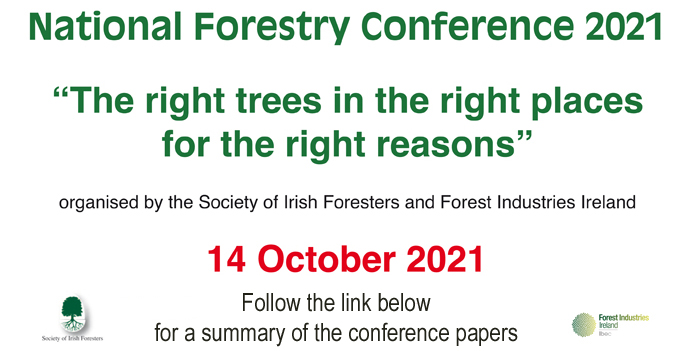Forests, including their products, are the most versatile, renewable and sustainable resource on the planet. Forestry has been singled out in Ireland’s Climate Action Plan (ICAP) as having a major role in achieving carbon neutrality by mid-century. Growing forests sequester carbon, while wood extends carbon storage during its service life in construction and other uses from furniture to fencing and from packaging to renewable energy. Wood also displaces fossil based materials in construction, the biggest emitter of CO2 while biomass substitutes oil in renewable energy generation.
“Afforestation is one of the largest land-based, long-term climate change mitigation measures available to Ireland,” according to ICAP. “Management of our existing forests also provides opportunities to increase carbon stores,” it adds. Planned carefully, these forests will increase biodiversity, enhance the landscape and create sustainable employment in the forests and downstream industries in rural areas where virtually all these jobs are located.
The climate plan also places emphasis on timber as a renewable construction material. “The adoption of modern methods of construction (MMC) has the potential to dramatically improve construction sector productivity, innovation, speed of delivery, sustainability and ultimately, costs,” it states. It references cross-laminated timber and timber frame housing, which can replace concrete and steel in many applications such as floors, roofs, walls and stairs due to its strength and versatility.
![]()
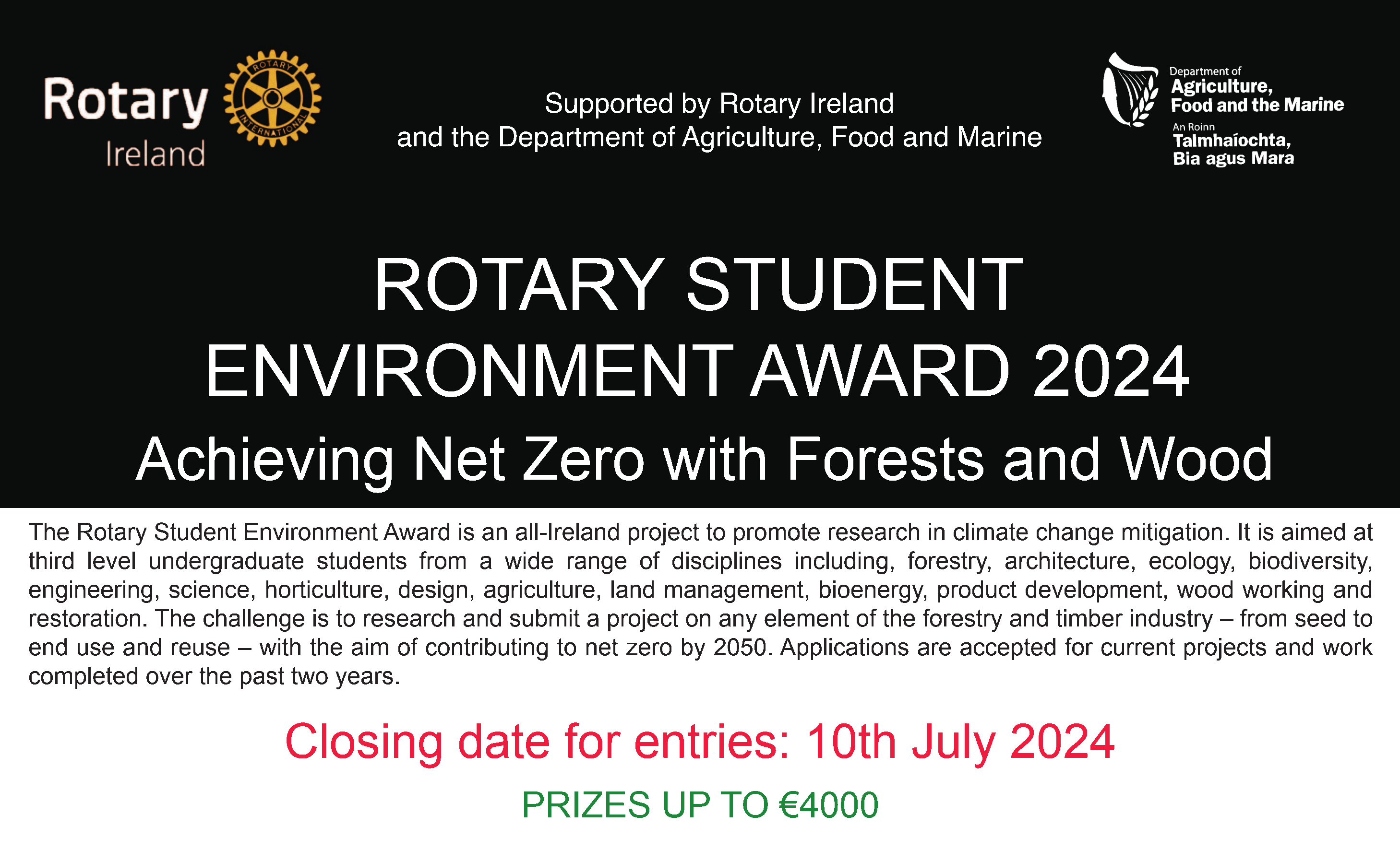
Download Rotary Ireland Net Zero Third Level Brochure
Download Rotary Ireland information and application form March
Contact info@wood.ie for further information.
![]()

Details of Wood Awards Ireland 2024 will be announced in MAY 2024 when we hope to be in a position to invite registered architects, designers, engineers, woodworkers, researchers, third level students and other practitioners to submit entries. As in previous years, wood should be the inherent medium of projects submitted and be sourced from sustainably managed forests.
Wood Awards Ireland 2024 invites registered architects,* designers, engineers, woodworkers, researchers, third level students and other practitioners to submit entries for this coming year’s awards.
Wood Awards Ireland (WAI) is organised by Forest Industries Ireland (FII) the forestry group in Ibec in partnership with the Royal Institute of the Architects of Ireland (RIAI) and Enterprise Ireland (EI) with support from the Forest Service, Department of Agriculture, Food and the Marine. It promotes wood as a sustainable material in innovative projects in Ireland and overseas.
Entries are accepted in following categories:
- Large-scale public and private buildings.
- Small-scale private buildings.
- International award – best overseas project.
- Restoration and conservation.
- Furniture – both bespoke and production.
- Innovation – functional and non-functional including local projects in processing, craft, research and sculpture.
Details on category winners and commendations for Wood Awards Ireland 2022 and Student Awards in catalogue – see Talking Timber / Publications on this site.
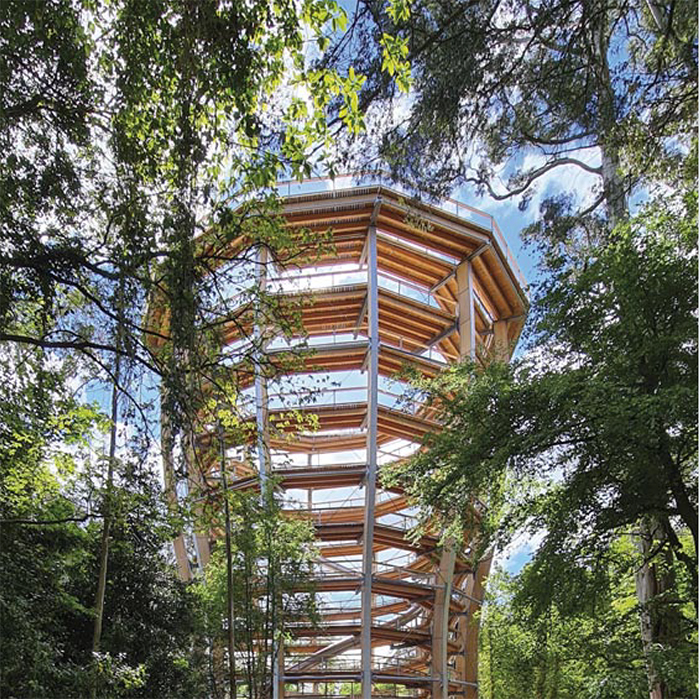
OVERALL WINNER WOOD AWARDS IRELAND 2022
Treetop Walk, Coillte
Avondale
Co. Wicklow
EAK Ireland Treetop Walks
PROJECT TEAM
Project Manager: Fritz Donhauser
Site Manager: Ian Redmond
Architect: stöger + kölbl
Contractors: John SISK & Son;
D&S Baucon Ltd
Contact info@wood.ie for further information.
![]()

Wood Awards Ireland 2022 invites registered architects,* designers, engineers, woodworkers, researchers, third level students and other practitioners to submit entries for this year’s awards. Wood should be the inherent medium of projects submitted and be sourced from sustainably managed forests.
Wood Awards Ireland (WAI) is organised by Forest Industries Ireland (FII) the forestry group in Ibec in partnership with the Royal Institute of the Architects of Ireland (RIAI) and Enterprise Ireland (EI) with support from the Forest Service, Department of Agriculture, Food and the Marine. It promotes wood as a sustainable material in innovative projects in Ireland and overseas.
Entries are accepted in following categories:
- Large-scale public and private buildings.
- Small-scale private buildings.
- International award – best overseas project.
- Restoration and conservation.
- Furniture – both bespoke and production.
- Innovation – functional and non-functional including local projects in processing, craft, research and sculpture.
Download WOOD AWARDS IRELAND 2022 information and application form
Student Wood Awards – entries accepted from third level colleges in all categories – separate entry form.
Download Third LEVEL STUDENT WOOD AWARDS IRELAND 2022 application form
Contact info@wood.ie for further information.

Download Rotary Student Environment Award Brochure
Download Rotary Ireland information and application form
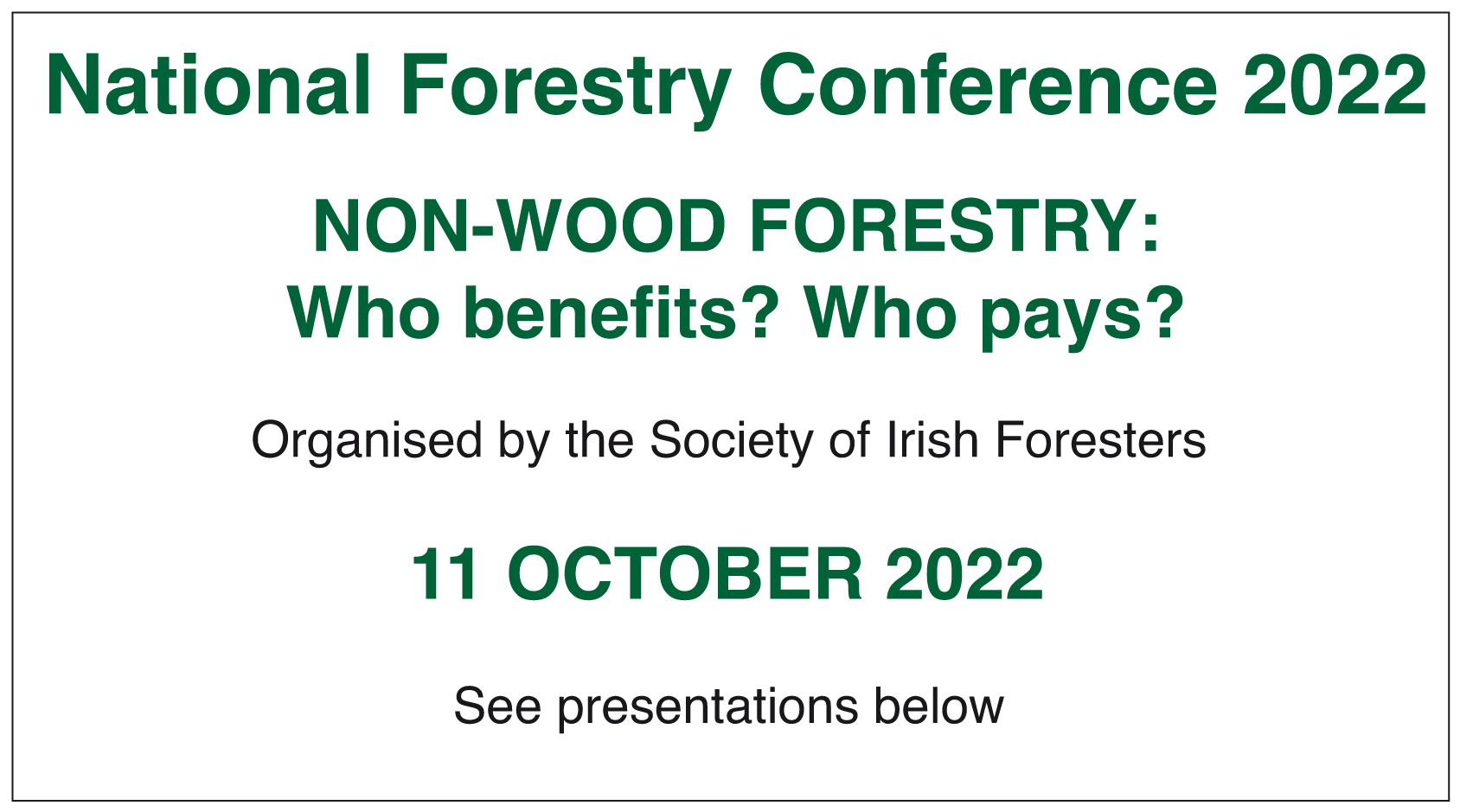
View – Conference Booklet 2022 NON-WOOD FORESTRY –
Who benefits? Who pays?
◊ Colm Hayes – Balancing the multipurpose benefits of forestry
◊ Olive Leavy – The role of forest owners in delivering non-wood benefits
◊ Donal Whelan – Balancing benefits with payments
◊ Dr. TR Nisbet – Protecting Water Quality, Shade Provision and Flood
Regulation

CATEGORY WINNERS 2020
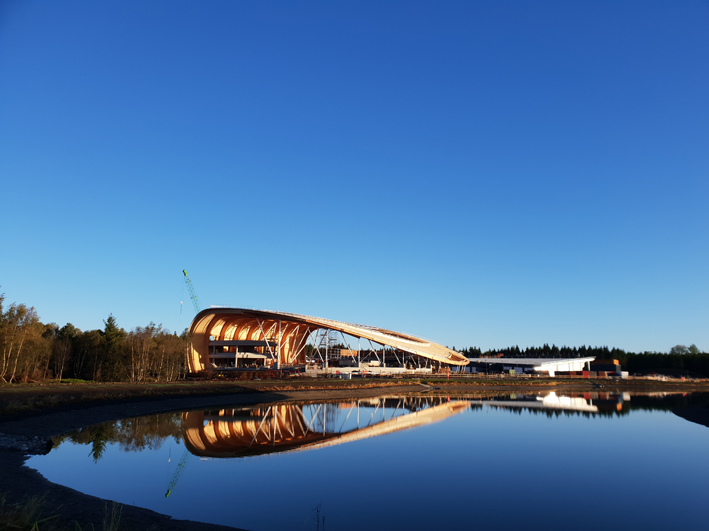
Overall winner: Center Parcs, Ballymahon, Co. Longford.
Holder Mathias Architects.\Colm KerrLarge-scale public building winner: Sandford Park School.
O’Donnell + Tuomey Architects.\Dennis GilbertSmall-scale building winner: Pavilion House.
Robert Bourke Architects.\Ste. Murray
Furniture winner: Vinculum Table.
Alan Meredith. \Roland Paschhoff



The winners of Wood Awards Ireland (WAI) 2020 have been announced. The judging panel chaired by Ciaran O’Connor has selected the overall and six category winners as well as awarding commendations for projects that were deemed worthy of acknowledgment.
WAI 2020 received entries from registered architects, engineers, designers, furniture makers, wood workers, conservationists and third level colleges carrying out postdoctoral research into wood and wood products. This year we also featured a Third Level Student Wood Awards.
The WAI winners were formally announced at a webinar on 26 March 2021.
WAI 2020 Brochure available for download here.
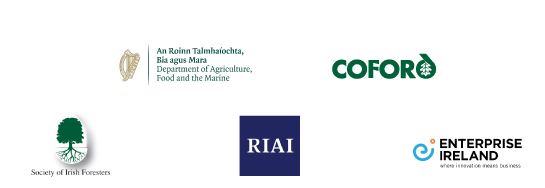
https://www.wood.ie/wp-content/uploads/2022/01/Conference-2021-The-Right-Trees-in-the-Right-Places.pdf
![]()

We thank Pippa Hackett, Minister of State with responsibility for forestry
and all the speakers who made presentations at the Webinar National Forestry Conference
PROTECTING OUR TREES AND FORESTS
The importance of safeguarding Ireland’s forests from pest, diseases and other damage
Thursday, 8 October 2020
Our thanks to the 216 attendees who logged in to the conference
Organised by the Wood Marketing Federation and the Society of Irish Foresters
Please view or download the following presentations
2 Richard OHanlon Actual and potential threats
3 Tom McDonald Safeguarding the forest
4 Brian Murphy As the sawmiller sees it
5 Mechteld Schuller As the grower sees it
6 Miguel Nemesio Gorriz New findings in ash research
7 Melanie Tuffen Pest risk analysis in commercial forests
The conference brochure is available for download from our publications section.

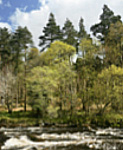

Scottish presence brightens up climate change conference as Minister Gougeon outlines how Scotland has made forestry a priority and “has invested in developing and growing the sector”.
Mairi Gougeon, Scotland’s Minister for Rural Affairs and Natural Environment told delegates at the national forestry conference that “there is a growing understanding that forestry and forests are in the front line of our national response to the climate change emergency that faces us all”. She said: “There is great dynamism in forestry in Scotland at the moment. This is because the Scottish Government has made it a priority and has invested in developing and growing the sector.”
In contrast with Ireland, Scotland has 18.5% forest cover and aims to have 21% of the land under forest and woodland by 2032, while the conference was told that Ireland’s target of 18% forest cover won’t be achieved until well into the next century based on current planting levels.
Minister of State Andrew Doyle opened the conference, organised by the Wood Marketing Federation and the Society of Irish Foresters. The conference explored the central role of forests in climate change mitigation. However, the theme was broadened by speakers including Stuart Goodall, CEO of the UK Confederation of Forest Industries (Confor).
To illustrate this holistic approach, Stuart Goodall presented a case study of a mature forest in South Scotland and examined the carbon benefits along the wood chain; from planting to product. “The carbon stored in the forest is one third of the story,” he said. “More than half as much again is stored in the wood products made from it, but the biggest carbon saving of all is in substitution, because timber is used instead of non-renewable masonry, steel, or fossil fuels.”
In a wide-ranging talk on production forestry and climate change, Marina Conway CEO, Western Forestry Co-op stressed the need to plant “the right species in the right places” and quoting Sir David Attenborough, she said that in many instances the right trees were those planted in commercial plantation forests.
She examined the role of forestry from a global and local perspective. “Halting the loss and degradation of forest ecosystems and promoting their restoration can contribute over one-third of the total climate change mitigation required by 2030 to meet the objectives of the Paris Agreement,” she said. She demonstrated how this can be achieved at a national and local level.
Harvested wood products abate close to one billion tonnes of CO2 but Ireland can improve this further she told delegates. “Even relatively small operations such as McCauley Wood Fuel in Mohill, Co. Leitrim which take in 400 tonnes of timber weekly displace 150,000 litres of heating oil every week. This enterprise is not near full capacity so the benefits for the local economy are enormous as the McCauleys and similar enterprises expand.”
However, in common with other speakers, she said the full potential of forestry will not be realised unless we achieve viable afforestation programmes. This will require a different approach and “may required greater financial incentives” and measures she said, such as:
- Linking to agriculture expansion – opportunity of CAP 2020. “Forest performance under the Carbon Navigator is welcome step but driver is needed”.
- A review of forest land such as unenclosed areas and removing pressure from concentrating the afforestation programme in one province.
- Payment for ecosystem services (PES), in relation to water, carbon and biodiversity.
- Removal of replanting obligation, which can be done without risking deforestation.
- Broadleaf afforestation including pioneer birch woodland but 15 year premium period insufficient. This would need payments for ecosystem services.
She is a strong advocate of broadleaf planting but acknowledges the major role coniferous production forests will play in decarbonising the economy. High production plantation forests complement rather than threaten natural woodlands, she explained. In most instances they provide the only viable source of wood for construction. Quoting Trevor Fenning and Jonathan Gershenzon she said: “Those who oppose plantation forests, need to be clear what the choices really are, rather than what they might like them to be.”
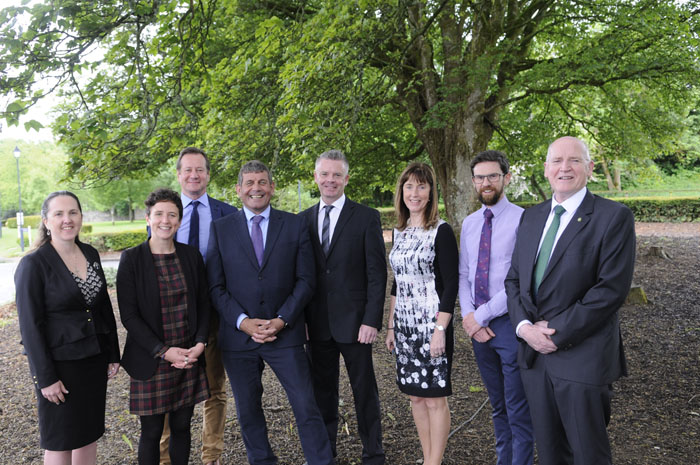
Some of the contributors at the national forestry conference: Marina Conway, CEO Western Forestry Cooperative, Mairi Gougeon, Minister for Rural Affairs and Natural Environment, Scotland’s; Stuart Goodall Confor; Andrew Doyle – Minister of State; Des O’Toole, Coillte and IrBEA; Dr. Mary Ryan, Teagasc; Ken Bucke, President, Society of Irish Foresters and Donal Magner, Wood Marketing Federation.

Forester, architect and engineer explain the ‘substitution impact’ of wood when used instead of non-renewable masonry, steel, or fossil fuel at the forestry conference
While the recent national conference “Forestry as a climate change solution” explored the role of forests in carbon sequestration, what happens wood after it leaves the forest proved to be just as important in the debate on climate change mitigation. Outlining the Forest Industries Ireland (FII) perspective, Marina Conway, CEO, Western Forestry Co-operative illustrated this point when discussing wood in decarbonising the economy, in construction and agriculture. “Every tonne of timber used instead of cement results in an avoided emission of two tonnes of CO2,” she told delegates.
Mike Haslam, director with Haslam & Co. Architects outlined how his practice’s ethos is design-based on the circular economy “or a cradle to cradle approach where waste equals resource”. He said: “A fundamental part of this is an interest in low embodied energy building and our interest in designing buildings as carbon sinks. At its most basic this acknowledges that one tonne of CO2 locked in per cubic metre of timber is locked in for the life-time of the product.”
He illustrated this with a number of case studies featuring buildings his practice has designed. “Our exploits in timber moved onto post and beam construction at the Airfield Estate in Dundrum using glulam supplied by Cederlan in Cork,” he explained. “Glulam is of interest not only as a carbon sink but also because its strength to weight ratio is better than steel and its embodied energy is five times less than the steel equivalent.”
“For wood products to make a difference in carbon sequestration, enabling fast-growing wood species from temperate regions to substitute for hardwoods is important,” he said. This has relevance for Ireland as a producer of commercial conifers. He cited panel board reconstituted timber products such as long-lasting reconstituted Accoya board used for external cladding and made from conifers, which has the strength and durability of tropical hardwoods.
Des O’Toole, President, IrBEA and Coillte focused on the ‘substitution impact’ of wood. “The ‘substitution impact’ describes how much greenhouse gas emissions would be avoided if wood is used instead of other fossil based products to provide the same function,” he explained. “For example, a tonne of cement emits nearly a tonne of carbon in its making while a tonne of timber, will – through the trees from which it was made – remove up to two tonnes of carbon from the atmosphere.”
An engineer by profession, O’Toole believes that the benefits of increasing general wood use through substitution’ is not understood, capitalised on, or even promoted adequately enough by the sector. “It should be more widely recognised as one of the key drivers in our battle against global warming as we now face a declared climate emergency,” he maintained. He said these benefits are often overlooked or not accounted for in the carbon balance equation. “The forest industry needs to highlight them more effectively with our policymakers and with the general public,” he said. “It is therefore imperative, as the drive to reduce CO2 in construction increases, that we encourage the industry and policy makers to start building with carbon, rather than emitting it.”
He placed emphasis on the major contribution of engineered wood in future construction but solid wood in timber frame housing – now the main structure in north America and Europe – can also make a major contribution to decarbonising the construction industry in the short-term. “It is estimated the average three-bedroom timber-framed house, stores roughly 19 tonnes of CO2, meaning that if Ireland produced all of its 15,700 new homes last year using timber-frame, a total of just under 300,000 tonnes of CO2, would be locked away every year,” the IrBEA President maintained. “At a steady rate of 35,000 new homes per annum – as some analysts suggest we need – this equates to 665,000 tonnes of sequestered carbon. To put all of this in perspective, the carbon embodied in this number of homes, is equivalent to the emissions produced by approximately 370,000 modern cars over a year.”
In addition to construction, he maintained bioenergy had been underestimated in displacing fossil fuel.”The bioenergy sector is a key part of the overall forestry ecosystem,” he said. “As well as contributing to towards Ireland’s ambitious renewable energy targets, the expected growth in demand for biomass will be a key outlet for the increased supply of fibre projected over the next 15 years. The development of local biomass supply hubs will play a role in driving this mobilisation by matching local supply with local demand and providing the best route to market for small wood in first and second forest thinnings.”
PLEASE SEE PRESENTATIONS AND BOOKLET BELOW
Forestry as a climate change solution conference booklet 2019
Part 1 STUART GOODALL Presentation to Irish Conference – May 2019 – Final
Part 2 STUART GOODALL Presentation to Irish Conference – May 2019 – Final
2 MARINA CONWAY presentation at WMF climate change conference
Part 1 MIKE HASLAM timber carbon sink construction
Part 2 MIKE HASLAM timber carbon sink construction
5 JUSTIN McCARTHY forestry conference
6 DR. GERRY BOYLE Forest Confer Pres GB May 2019

![Wood marketing federation [top]](/wp-content/uploads/2023/12/wood-banner.png)










